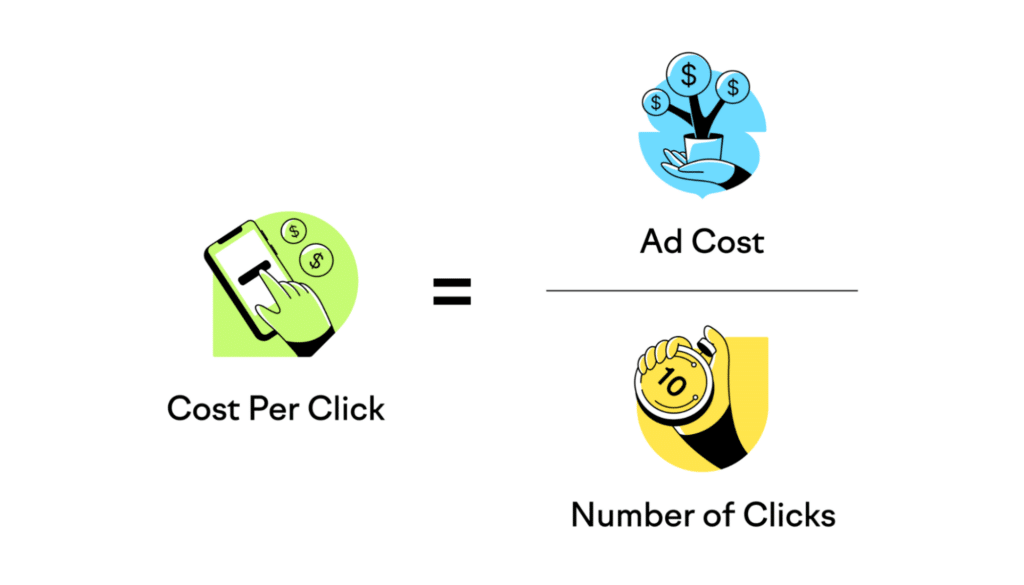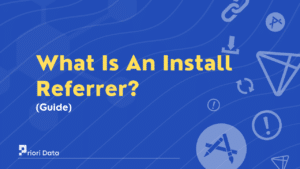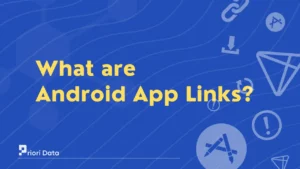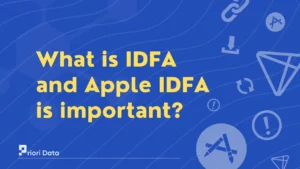In-app advertising is a type of mobile advertising that displays ads within an app. This can take the form of banner ads, interstitial ads, native ads, and rewarded video ads. These advertisements appear within the app itself and are integrated into the app’s design.
These ads are often placed to ensure visibility to the user. The goal is to target existing users within the app to provide them with relevant ads.

Why is In-App Advertising Important?
In-app advertising is becoming more important for mobile app developers and advertisers. In general, users are growing year over year, with people spending more time on their devices.
This means that more people are using mobile apps than in past statistics. This means making in-app advertising becoming an effective way to reach audiences.
In general, advertisers can track user preferences and actions within the app. Companies optimize this data to create targeted ads that resonate with users. This can drive more conversions if they are engaging with your ads.
Unlike some forms of ads, such as pop-ups or interstitials, in-app ads are non-intrusive. This means that users are less likely to get annoyed or frustrated by the ads. This can lead to a better user experience and positive feedback in return.
In-app ads can be more engaging as they deliver the context within the app itself. They can be more engaging and interactive than other forms of advertising. For example, video ads can tell a context or showcase a product in a more compelling way than a static banner ad.
How Does In-App Advertising Work?
In-app advertising works by allowing advertisers to place ads within mobile apps. First of all, advertisers select their target audience to create effective in-app ads. These ads target specific users based on factors like age, interests, and location. After finding target users then advertisers can create their ad campaigns. Advertisers can also choose the format of their ads, that play before, during, or after an app’s content.
After the creation of ad campaigns, ad networks serve the ads for users within mobile apps. Ad networks are platforms that connect advertisers to display ads within their apps. Users view and interact with the ads by clicking on the ads, and watching videos. Advertisers can track performance and use this data to optimize their future campaigns.
One of the most popular forms of in-app advertising was video-rewarded ads. These ads provide value to the user by offering rewards in exchange for watching the ad. For example, a gaming app may offer users extra lives or coins in exchange for watching a short video ad.
What are the benefits of In-App Advertising?
There are several benefits of in-app advertising for app developers as well. They can use in-app advertising to generate revenue, by selling ad space to adverts.
They can also earn by using an ad network to serve ads to their users. This can help developers monetize their apps and earn a steady stream of income. In-app advertising has several benefits for businesses, including:
1. Boost User Engagement
Mobile apps can be engaging, and users spend a significant amount of time using them. This means that in-app advertising has a higher chance to get notified by users.
In-app advertising allows businesses to target specific audiences based on various measures. This ensures that their ads depend on the relevant interests of users. They engage with users with various forms of advertising to gain attention.

2. Increased revenue from in-app purchases
In-app advertising earns revenue from in-app purchases in several ways. When a user engages with an app means that they are spending more time within the app. Additionally, those users would make in-app purchases as they are likely to click on in-app ads.
For example, an interstitial ad may offer users a discount on in-app purchases if they watch the ad. This not only generates revenue from in-app purchases. It can also increase user engagement with in-app ads.
3. High CTR
High CTR (Click-Through Rate) can be very beneficial for in-app advertising. It indicates that a significant number of users are engaging with the ads and clicking to perform a task. This can lead to higher revenue, as well as brand awareness and customer acquisition.
The high CTR of in-app ads within an app has been a key factor in the app’s success and revenue generation. This could be a valuable platform for advertisers to reach engaged users.
In-app advertising can also help developers to keep their apps free. Many users are hesitant to pay for apps, so they struggle to generate revenue from paid apps. In-app advertising provides an alternative revenue stream that allows offering their apps. That still generates income from free apps.
What are the In-app pricing models?
In-app pricing models refer to the various ways that charge for accessing or using their apps. In the context of in-app advertising, there are several pricing models.
They can generate revenue from advertisers who want to display ads in their apps. Here are some examples of in-app pricing models for in-app advertising:
1. Cost per Mille (CPM)
Advertisers pay a fixed amount for every thousand ad impressions their ad receives. Regardless of the user’s action whether users click on the ads or not they would get paid.
They would set an amount for every thousand ad impressions displayed within the app. For example, an app developer may charge $5 CPM for an ad campaign. This means that the advertiser pays $5 for every thousand times the ad displays within the app.
2. Cost per Click (CPC)
This model charges advertisers for each click that their ad receives from users. Advertisers pay a set amount for every user who clicks on their ad.
For example, an app developer may charge $0.30 CPC for an ad campaign. This means that the advertiser pays $0.30 for every user who clicks on their ad within the app.

3. Cost per Action (CPA)
Advertisers pay for specific actions taken by users after clicking on their ads. They pay a set amount for every user who completes a specific action after clicking on their ad. It could be actions like an in-app sale or downloading an app.
For example, an app developer may charge $3 CPA for an ad campaign. This means that the advertiser pays $3 for the completion of an action.
What are the challenges of In-App Advertising?
There are several challenges associated with in-app advertising as well. One of the biggest challenges is ensuring that ads are relevant to users. Users are unlikely to engage with ads if they are not relevant to the users.
In-app ads can be intrusive and disrupt the user experience. This can result in users becoming frustrated with the app. To prevent uninstalling, businesses should ensure that their ads should be relevant.
Another challenge is ensuring that ads do not interfere with the user experience. Ad fraud could be a major concern in the advertising industry, and in-app advertising is not immune to it.
It can take many forms, including fake clicks, fake installs, and fake impressions. This can result in businesses paying for ads that are not seen by real users.
Ad blockers are very popular, which can prevent in-app ads to display. This means that businesses need to find new ways to reach their target audience.
FAQs
Ques 1: Can in-app ads be blocked?
Ans: Yes, in-app ads can be blocked. Using ad blockers and disabling personalized apps can block in-app ads.
Ques 2: How do I restrict ads?
Ans: Use an ad blocker or adjust your ad preferences in your browser or device settings.
Ques 3: Why do free apps have ads?
Ans: Free apps have ads as they generate revenue and allow users to access the app without paying. We can use In-app advertising to earn money through free apps.
Ques 4: How do ad blockers make money?
Ans: Ad blockers make money through paid premium versions of software or through partnerships.
Ques 5: How do I stop in-app ads?
Ans: To stop in-app ads, you can buy the ad-free version of the app or use an ad-blocker app.






